

Cells Cells - Parts of the Cell Rap. Cell Functions - Biome Map: Definition, Examples, And Why It Is ImportantOctober 25, 2018If you want to gain a better understanding of all living things, from plants to animals, it’s essential to learn about biomes and the role they play in Biology.
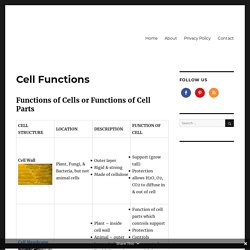
Learn how to read a biome map and define each type of biome in the world. Quick Navigation What Is A Biome? Exploring The Different Types Of … Continue reading "Biome Map: Definition, Examples, And Why It Is Important"Dimensional Analysis: Definition, Examples, And PracticeOctober 22, 2018If you’ve heard the term “dimensional analysis,” you might find it a bit overwhelming.
While there’s a lot to “unpack” when learning about dimensional analysis, it’s a lot easier than you might think. Learn more about the basics and a few examples of how to utilize the unique method of conversion. Build-A-Cell. Overview Build-A-Cell is a drag and drop game to teach students about the organelles and organelle substructures within a plant, animal, bacterial, and fungal cell.
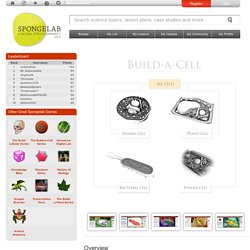
How to play Build-a-Cell 1. Drag the first organelle from the tray on the right side 2. 3. 4. 5. Teaching with Build-a-Cell Build-a-Cell is an awesome tool to introduce and teach concepts of cellular biology. Parts of the Cell: Using the Jigsaw Method to learn about Organelles – Middle School Science Blog. This is an updated version on how to use the ‘Jigsaw Method’ for students to learn about cell organelles that includes a tech component – each expert group will create Power Point slides for their assigned organelles.
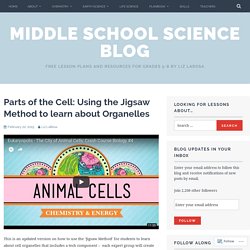
When each expert group is done, they will have one complete set of slides that they will use to teach each other in their home groups, use as a resource to review at home, and/or print out flashcards (4-6 slides per page) if needed. Materials Desktop/Laptop/Tablet with Internet AccessGoogle Slides Template (public link) One shared google doc per home groupTo save this ppt – click on “File” then “Make a Copy” or “Download as” and choose the format you would like.
Please do not request editing access to this file – that would change my version of this slide show. Worksheet for 4 expert groups (pdf)Worksheet for 5 expert groups (pdf) this allows for less information per expert group, but larger home groups Links for research Group 1 contains an expert from A, B, C, & D. Organelle Wars. What Are the Six Kingdoms of Life? Organisms are classified into three Domains and into one of six Kingdoms of life.

These Kingdoms are Archaebacteria, Eubacteria, Protista, Fungi, Plantae, and Animalia. Organisms are placed into these categories based on similarities or common characteristics. Some of the characteristics that are used to determine placement are cell type, nutrient acquisition, and reproduction. The two main cell types are prokaryotic and eukaryotic cells. Mitosis in Real Cells. To study mitosis, biologists often look at particular cells.
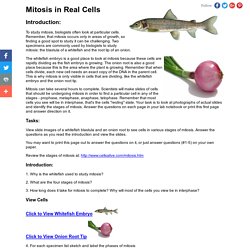
Remember, that mitosis occurs only in areas of growth, so finding a good spot to study it can be challenging. Two specimens are commonly used by biologists to study mitosis: the blastula of a whitefish and the root tip of an onion. The whitefish embryo is a good place to look at mitosis because these cells are rapidly dividing as the fish embryo is growing. The onion root is also a good place because this is the area where the plant is growing. Remember that when cells divide, each new cell needs an exact copy of the DNA in the parent cell. Interactive Eukaryotic Cell Model.
Nucleolus: The prominent structure in the nucleus is the nucleolus.
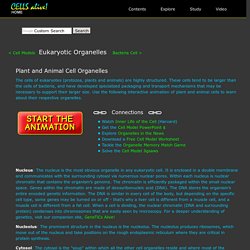
The nucleolus produces ribosomes, which move out of the nucleus and take positions on the rough endoplasmic reticulum where they are critical in protein synthesis. Cytosol: The cytosol is the "soup" within which all the other cell organelles reside and where most of the cellular metabolism occurs. Though mostly water, the cytosol is full of proteins that control cell metabolism including signal transduction pathways, glycolysis, intracellular receptors, and transcription factors. Cytoplasm: This is a collective term for the cytosol plus the organelles suspended within the cytosol.
Centrosome: The centrosome, or MICROTUBULE ORGANIZING CENTER (MTOC), is an area in the cell where microtubules are produced. During animal cell division, the centrioles replicate (make new copies) and the centrosome divides. Centriole (animal cells only): Each centriole is a ring of nine groups of fused microtubules. Build-A-Cell.